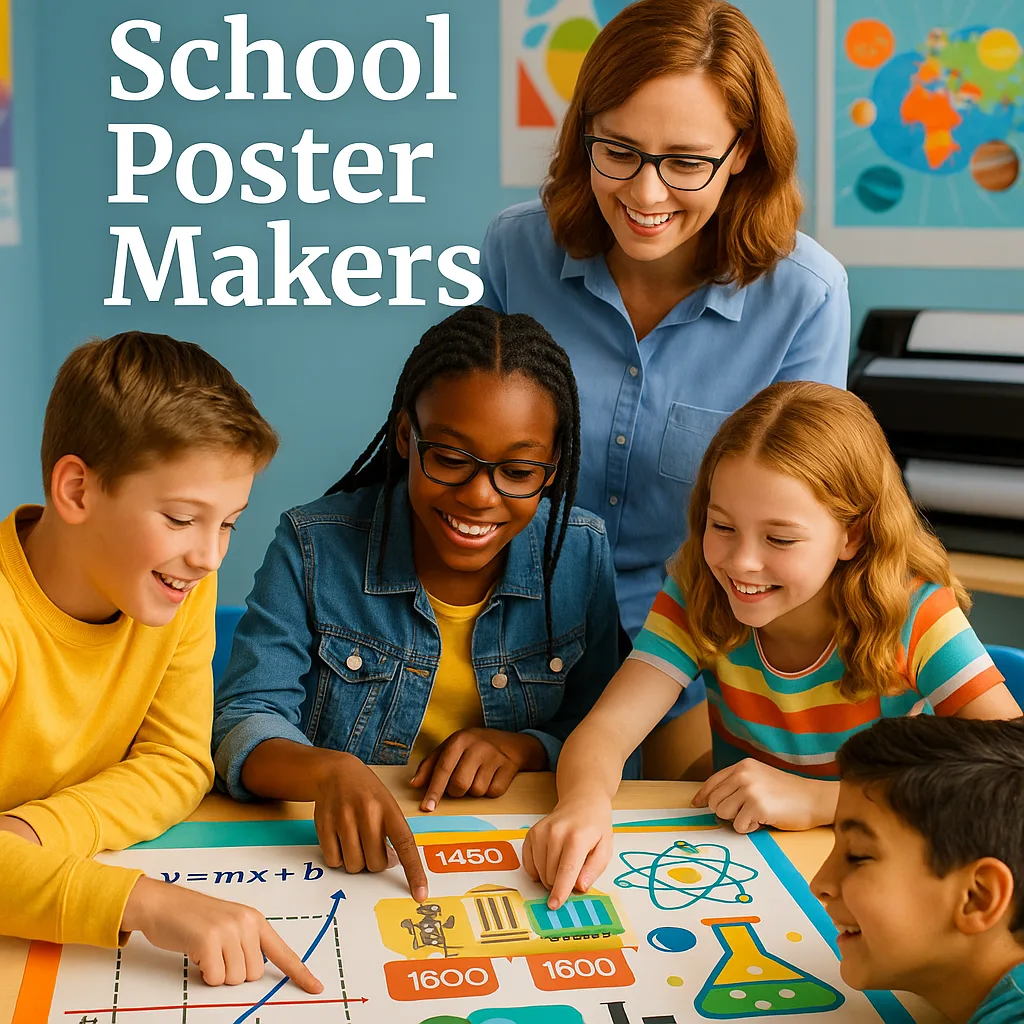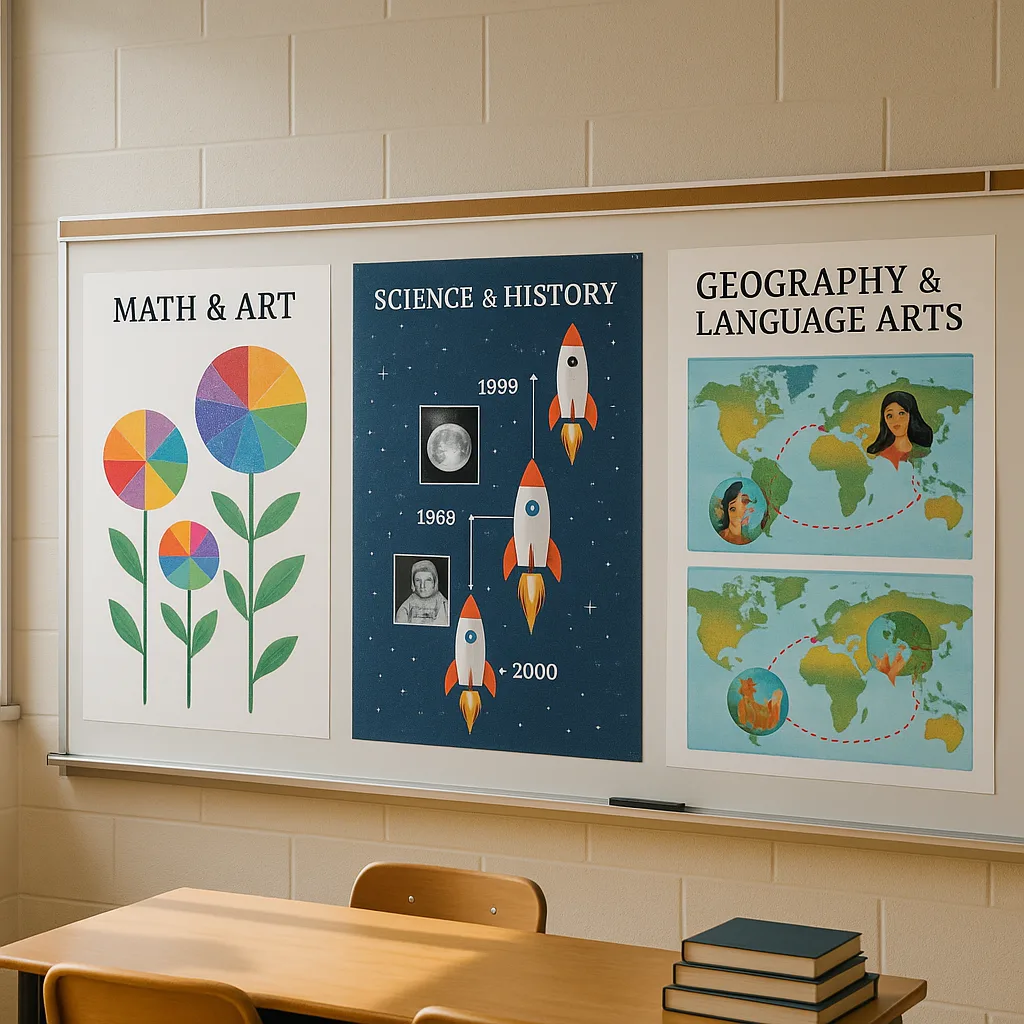Poster Machine Maker for Cross-Curricular Learning
Breaking Down Subject Silos with Visual Projects
Traditional education often compartmentalizes learning into distinct subjects, but real-world problems require interdisciplinary thinking. Visual projects created with a quality poster machine maker naturally bridge these artificial divides. For instance, when students create a poster about the water cycle, they’re not just learning science—they’re practicing measurement (math), descriptive writing (language arts), and visual design (art).
Research from the University of Maryland’s Education Department consistently shows that students retain information 65% better when multiple subjects reinforce the same concepts. Furthermore, cross-curricular projects help students develop critical thinking skills by encouraging them to make connections and see patterns across disciplines. This holistic approach mirrors how professionals actually work in the real world, preparing students for future careers where interdisciplinary collaboration is essential.
Mathematics Meets Art: Data Visualization Projects
One of the most successful cross-curricular connections I’ve implemented involves combining mathematics with visual arts through data visualization posters. Students collect real data—perhaps tracking recycling efforts in their school or surveying favorite books by genre—then transform these numbers into compelling visual stories.
Using a printer for posters, students can create large-format infographics that showcase bar graphs, pie charts, and creative data representations. For example, fifth-graders at Sunnyvale Elementary created stunning posters showing water usage data as water droplet pictographs, with each droplet representing 10 gallons. This project reinforced multiplication, data analysis, proportion, and artistic design principles simultaneously.
Project Framework Checklist
✓ Identify 2-3 subjects to integrate
✓ Define clear learning objectives for each
✓ Create assessment criteria
✓ Plan collaboration time
✓ Gather materials and resources
✓ Schedule poster creation sessions
✓ Arrange presentation/gallery walk
✓ Develop reflection activities
Student Engagement Increase
with cross-curricular visual projects
Science and History Timeline Displays
Timeline posters brilliantly merge scientific discoveries with historical context, helping students understand how innovation happens within specific social and cultural moments.
Consider a timeline poster project exploring the Space Race. Students research both the scientific achievements (rocket technology, orbital mechanics) and the historical context (Cold War tensions, civil rights movement). Using a poster machine maker, they create visually rich timelines that show parallel developments in technology and society.
One particularly successful project involved eighth-graders creating timeline posters about medical breakthroughs. Each poster featured a decade from 1900-2020, showing major medical discoveries alongside world events that influenced or were influenced by these advances. Students incorporated primary source images, data graphs showing disease mortality rates, and artistic representations of scientific concepts.
The beauty of timeline projects lies in their flexibility. Elementary students might create simpler timelines showing the life cycle of a butterfly alongside seasonal changes, while high schoolers could tackle complex topics like the parallel development of computer technology and globalization. A quality printer for posters allows these projects to be displayed prominently, reinforcing learning every time students pass by.
Collaborative Frameworks for Teacher Success
Successfully implementing cross-curricular poster projects requires thoughtful coordination between teachers. Based on my experience leading these initiatives, here’s a proven framework that ensures smooth collaboration and meaningful learning outcomes.
Planning Phase
Week 1-2: Initial Meeting
• Identify shared standards
• Brainstorm project themes
• Set timeline and deadlines
Implementation Phase
Week 4-5: Research
• Subject-specific lessons
• Collaborative work time
• Peer feedback sessions
Week 6-7: Creation
• Design rough drafts
• Finalize poster layouts
• Print using school equipment
Assessment Phase
Week 8: Presentation
• Gallery walk setup
• Student presentations
• Peer evaluations
Week 9: Reflection
• Written reflections
• Teacher debriefing
• Project improvements
Real Success Stories from Schools
Poster Machine Maker Cross-Curricular Assessment Strategies
Assessment of cross-curricular projects requires careful consideration of multiple learning objectives. Here’s a comprehensive rubric framework that fairly evaluates both subject-specific content and interdisciplinary connections.
Content Knowledge (40%)
• Accuracy of information from each subject area
• Depth of understanding demonstrated
• Appropriate use of subject-specific vocabulary
• Evidence of research from credible sources
Visual Communication (30%)
• Effective use of design principles
• Clear organization and layout
• Appropriate use of color and imagery
• Professional presentation using poster machine maker
Interdisciplinary Connections (20%)
• Clear links between subject areas
• Synthesis of information from multiple disciplines
• Creative integration of concepts
• Demonstration of cross-curricular understanding
Process & Collaboration (10%)
• Effective teamwork (if applicable)
• Meeting deadlines and requirements
• Reflection on learning process
• Presentation skills during gallery walk


